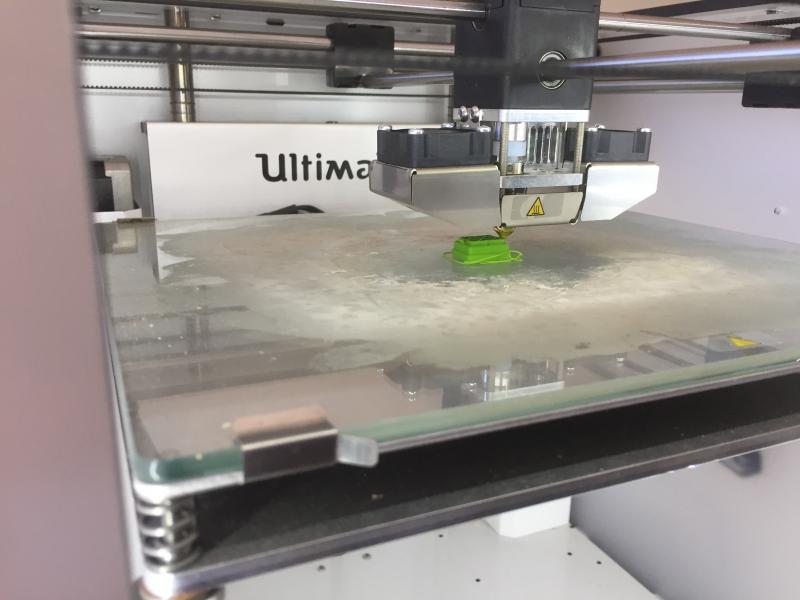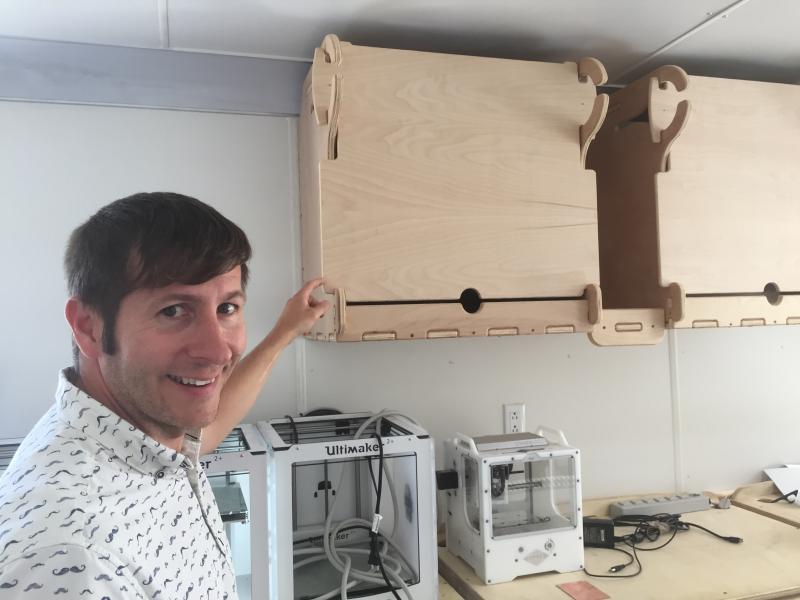Traveling science lab introduces not so high-tech lessons
Brian Purvis fiddled with a laser cutter while explaining to a group of surrounding teachers how to troubleshoot.
"Never promise your kids it'll work. It gives them an unrealistic idea about how life works," said Purvis, manager for General Electric's Brilliant Career Lab (aka "Fab Lab").
The lab — a trailer complete with 3D printers, circuits, and electronic kits — was set up on the University of Massachusetts Dartmouth campus on August 9 for teachers participating in the South Coast STEM Education grant program. In the six-hour day, teachers designed nameplates on the computer, which they then brought to life with the laser cutter.
The end products were wooden cutouts reading "Math Goddess" and "Ms. Sullivan."
"It was a simple project to introduce them to the technology, and then they can extrapolate how they would use that in their math and science classes," explained Dr. Stephen Witzig from the university's Department of STEM Education & Teacher Development.
But Old Rochester Regional Junior High School teacher Lauren O'Brien had different takeaways from the six-year program, which is currently wrapping up its fifth year.
"Teachers need to be open to using technology in the classroom. That's our fear, that students are going to ask troubleshooting questions that we can't answer, or that our students will know more than us. We need to embrace that," she said.
The 25-year-old science teacher said it is not uncommon for her to read instructions while introducing new gadgets, and that she's already been corrected by students several times. A recent project included tracking real-time data for an underwater volcano, she said.
"They're in the digital age of 'click, click, click,' and they know what they're doing," she said. Implementing tech is vital for students' careers, which means teachers must be willing to learn from their students and acknowledge their own lack of understanding, O'Brien further explained.
But as one of 20 participants in the grant program, O'Brien now has access to the technical savvy she'll need to keep up with scientific advances.
In O'Brien's classroom, the ORR teacher has been able to utilize Google for collaborative projects, and worked with her team to rewrite the science curriculum so that it is aligned with Next Generation Science Standards, a three-dimensional approach to K–12 science instruction.
"As a group of teachers, it's become a professional support network. That's invaluable," said Wareham Middle School Math Department Chair Bonnie Lasora, excited about building relationships with experts and colleagues, and having access to technology resources throughout the South Coast.
Since the program's launch, Lasora has attended eight related conferences, taught science, technology, engineering, art, and math (STEAM) in China, and is bringing two 3D printers to the math department this year. She said all that was made possible through the program.
Witzig said that's the point of the STEM grant program, to arm teachers with content knowledge, leadership skills, and new technology. Most of the participating teachers work in high-need areas like Wareham, Fall River, and New Bedford, he added.
Through the grant, the teachers have also received a laptop or iPad, a microprocessor, Arduino programming software, and an iRobot programmable robot, Witzig said. They all have also partaken in STEM-related internships; examples include working at a marine rescue sanctuary, aboard a science research vessel, and with wolves in Wyoming.
The South Coast STEM Education program is funded by a $2.86 million grant from the National Science Foundation/ Robert Noyce Teacher Scholarship Program. The program requires a five-year commitment from its participants in return for graduate coursework and professional development, according to the UMass Dartmouth website.




















